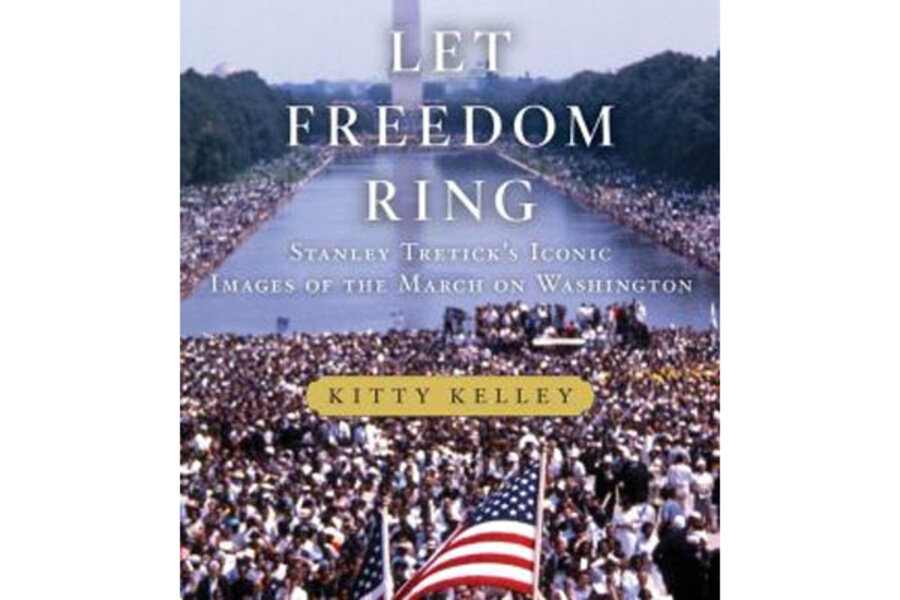Let Freedom Ring
Loading...
Coffee table books are usually more ornament than depth charge, but Let Freedom Ring, celebrity biographer Kitty Kelley’s sober presentation of previously unpublished photos by Look magazine staffer Stanley Tretick falls into the latter category.
Turn to any page and you’re likely to be moved – and reminded of work yet to be done, as Children’s Defense Fund founder Marian Wright Edelman manages to do so effectively in her introduction.
Published to mark the 50th anniversary of the Aug. 28, 1963, March on Washington for Jobs & Freedom, Kelley’s lean text, respectfully subordinated to the largely joyous, strikingly candid images by her old friend Tretick, vividly evokes a time when this nation was pregnant with both conflict and promise.
This publication of predominantly black-and-white photographs comes roughly two months after the US Supreme Court decided to turn back to some states voting rights codified into federal law by former President Lyndon B. Johnson. Such present-day actions give “Let Freedom Ring” special resonance.
There are few female faces among the movers and shakers pictured in this book, as illustrated by the photo on page 56 of the Big Ten, the men who shepherded the March to fruition in the face of discouragement from President John F. Kennedy and, to a lesser extent, Robert Kennedy, JFK’s brother and the attorney general. It was clearly a man’s world then – until you see the crowd shots of marchers cooling off in the Reflecting Pool near the capitol following page 100.
It was also a time in which groups came together for a common purpose: religions of all persuasions (Muslims apparently excepted), labor, and academia united for political change, unlike the more polarized process that we see today. Another period-specific detail found in the book: spreads of proof sheets of analog-camera pictures that had to be developed in darkrooms.
Kelley effectively builds a narrative that inexorably crests with Martin Luther King Jr.’s “I have a dream” speech. Along the way, she documents how the Kennedy brothers, who leaned liberal but defaulted to pragmatism, wrestled with the vexing, pressing issue of race. Despite pressure from churches both black and white, labor, and politicians of both parties, JFK also felt he had to take into consideration the Dixiecrats, segregationist southern Democrats he needed in his legislative pocket.
Those who wanted JFK to spearhead comprehensive civil rights legislation felt his “was not a profile in courage, but of caution,” Kelley writes. But under mounting pressure, and facing a crowd of more than 250,000, Kennedy and the security forces his brother commanded accommodated the march, which went off without a hitch.
A photo on pages 152-3 shows Kennedy with the Big Ten, including King, United Auto Workers chief Walter Reuther, and John Lewis, then chairman of the Student Nonviolent Coordinating Committee. (Lewis is now a Democratic congressman from Georgia). “Most of the Big Ten reported later the palpable sense of relief that everyone felt, especially the President, over the day’s events,” the caption reads.
Civil rights took a major step forward with the March and subsequent legislation, particularly LBJ’s 1965 signing of the Voting Rights Act.
In these pictures, Tretick, who covered JFK’s 1960 presidential campaign and the Kennedy White House, captured the building of a movement in all its nuances. When he died in 1999, he willed to Kelley a Marine Corps locker in which Kelley, who had known him since 1981, came upon this previously unpublished trove.
Tretick would be proud of his friend.






